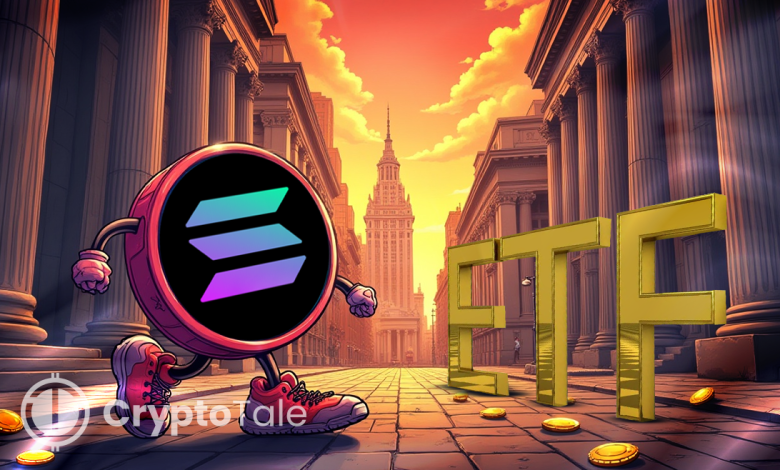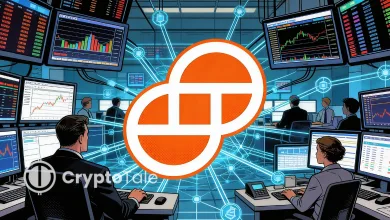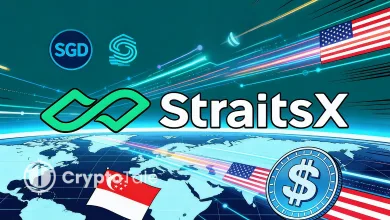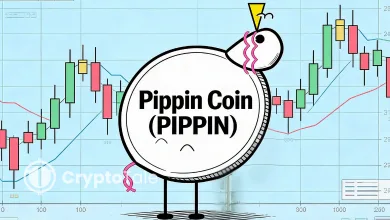Solana ETF Approval Could Come by September: Here’s Why

- Solana ETF may secure early SEC approval as CME futures reach eligibility soon.
- Inclusion of staking rewards gives Solana ETF an edge over current Ethereum funds.
- Solana ETF inflows could hit $5.5B in year one, soaring to $11.6B if SOL rallies.
CBOE’s recent push to update crypto ETP listing rules may accelerate Solana ETF approval before the SEC’s October 10 deadline. With Solana futures listed on CME since February 18, the six-month eligibility period concludes by September 17. As a result, the market is now preparing for a possible Solana ETF listing sooner than originally expected.
Cboe BZX submitted a formal proposal to the SEC to list the Invesco Galaxy Solana ETF, marking a significant step forward. The ETF would offer regulated exposure to Solana, tracking the Lukka Prime Solana Reference Rate. This benchmark aggregates real-time prices from major exchanges like Binance and Coinbase, updating every 15 seconds.
The proposed ETF structure includes both cash and in-kind creation and redemption mechanisms, providing flexibility and efficiency. Additionally, the fund may stake a portion of its SOL holdings, generating extra yield through trusted providers. This feature sets it apart from other crypto ETFs currently available in U.S. markets.
Solana Gains Ground Ahead of SEC Review
With staking included, the Solana ETF introduces a strong incentive absent in current Ethereum products. Ethereum ETFs in the U.S. do not offer staking, which has contributed to weaker inflows. In contrast, the ability to earn staking yield on SOL may drive greater participation.
Over the last 18 months, Solana’s network performance has significantly outpaced rivals across user activity, on-chain revenue, and developer engagement. The Electric Capital 2024 report confirmed, Solana surpassed Ethereum in developer count. These factors reinforce the blockchain’s readiness for broader financial integration.
The SEC’s stance on crypto ETFs remains mixed, although recent decisions suggest growing openness. In June, the agency approved in-kind redemptions for Bitcoin and Ethereum ETFs. This decision sets a useful precedent for Solana and may simplify the approval path.
Bitcoin and Ethereum ETF Benchmarks Provide Insight
In January 2024, when Bitcoin ETFs were introduced, they had attracted assets worth about 3.25% of the Bitcoin market cap, worth about $28.5 billion. That ratio increased to 5.8% within 12 months and formed a record of crypto ETF adoption. Ethereum ETFs came next, with an initial gain of 2.41%, increasing their growth to 4.57% within a year.
Solasecna has an opportunity to walk a similar or even stronger path. It is backed by staking and high on-chain activity. Initial estimates indicate that there will be an inflow of ETFs totalling $2.9 billion, which will increase to $5.52 billion within a year. In a favorable market, ETF AUM could grow to $11.6 billion if SOL hits $400.
While BlackRock has yet to file for a Solana ETF, others have stepped in early. Invesco and Galaxy Digital are leading the charge, while REX-Osprey used a legal workaround to gain exposure ahead of SEC approval. Additionally, treasury firms already hold over $540 million in SOL, suggesting early institutional accumulation.
Related: SEC Unveils Crypto ETP Listing Standards, Paving Way for Altcoin ETFs
Path Forward Aligns With ETP Framework
The SEC’s deadline for ruling on the Invesco Galaxy Solana ETF falls on October 10, though approval could come earlier. CBOE’s proposal to use the Generic Listing Standards could streamline the process once Solana’s futures eligibility is secured. That milestone will be reached on September 17.
If approved, it would become the first U.S.-listed product offering direct exposure to a proof-of-stake blockchain that includes staking rewards. Market maturity and the use of futures and staking make a convincing argument. The focus will all be on the SEC this September.




